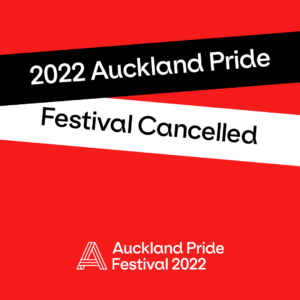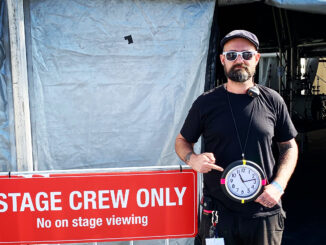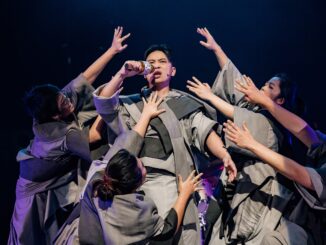
Aotearoa’s move into the Red light setting immediately and primarily impacts two intertwined sectors: hospitality and live events.
While every New Zealander will be affected by a major outbreak of Omicron in the community and have to make changes under the Red restrictions, most industries (for now) are able to continue.
But for hospitality and events, the public health gathering caps and distancing requirements result in these sectors taking on a massive and outsized hit. Events are doubly important, helping to drive people to hospitality as part of a night out. If events suffer, so does hospitality.
Hospitality has its own loud cheerleaders in the media. As a theatre person, my agenda is events – particularly live performance, arts and culture (music, comedy, theatre, dance, cultural celebrations and so on). For many of these events, it is not financially viable to operate under Red. A “staggering number” of arts events across the country have already shut down. As The Big Idea puts it, Red has the same effect as a lockdown: “Doors closed, money refunded, dreams shattered.”
We’ve heard this story before. Over the past two years I’ve written about Covid’s devastating impacts on Aotearoa’s arts ecology – from the initial outbreak, to Delta, and now, Omicron. Maybe you’re already close to clicking the ‘x’ on your browser – ‘Great, another think piece where people in the arts call for more support. After two years, haven’t they been given enough already?’. And you’d think so, wouldn’t you – that we’d learn from our pandemic experiences and make sure that the arts had a good buffer to deal with this next big outbreak. Believe me, I’m heartsick as I write this article. And I wouldn’t have to, if not for the fact that the patchwork support on offer has such massive holes.
I’m writing this article to assess the immediate impact of Omicron and Red restrictions on the arts and to go through the key questions arts practitioners are grappling with.
Right now, the onus is on arts practitioners to make tough and heart-breaking calls about their work and livelihoods. There are many different contexts – big events companies, community groups, Creative New Zealand-funded organisations, independent freelance artists. Calls being made now affect thousands of people – the arts has its own supply chain: events crew, performers, producers, directors, choreographers, designers, suppliers, on and on. As RNZ reports, “many musicians, actors, technicians and crew in the live events industry are facing months without any income because of the move to the red traffic light setting.”
Here are seven urgent questions arts practitioners are asking:
1. Can the event meet the Red restrictions?
Whereas in Orange events can have unlimited numbers (if vaccine passes are in use), under the Red traffic light setting capacity restrictions are introduced for vaccinated patrons: up to 100 people are permitted in a defined space with physical distancing of 1 metre. The distancing means that smaller venues will have a further reduction in audience capacity. Auckland’s Basement Theatre is going ahead in Red this week with half the usual capacity in their two spaces (and no more than 100 people are allowed in the full building at one time).
2. Is it financially viable to open in Red?
Shows are budgeted with a breakeven point: the minimum number of tickets that need to be sold to cover costs. For bigger shows, Red instantly makes it impossible to break even (let alone make a profit). Events that cancel now stand to lose a lot of money, but would lose even more if they continued under Red restrictions – with no way of clawing that back.
 Stuff has been keeping a running tally of cancellations. The list includes a range of arts and culture events: Wellington’s Lunar New Year Festival, Auckland’s Lantern Festival, The Others Way, Splore Festival, New Zealand Fashion Week, Auckland International Buskers Festival. Auckland Pride, which was set to offer the biggest Queer Arts programme in the Festival’s history – 90 in total – has cancelled. Events that were already rescheduled due to earlier Covid outbreaks have been impacted again – Madagascar the Musical in Christchurch had to cancel its run only three shows into its twice postponed season. Four years in the planning, North Shore Music Theatre’s Wicked the Musical, rescheduled after the Delta outbreak, has cancelled. Te Tairāwhiti Arts Festival has also had to cancel shows rescheduled due to Delta.
Stuff has been keeping a running tally of cancellations. The list includes a range of arts and culture events: Wellington’s Lunar New Year Festival, Auckland’s Lantern Festival, The Others Way, Splore Festival, New Zealand Fashion Week, Auckland International Buskers Festival. Auckland Pride, which was set to offer the biggest Queer Arts programme in the Festival’s history – 90 in total – has cancelled. Events that were already rescheduled due to earlier Covid outbreaks have been impacted again – Madagascar the Musical in Christchurch had to cancel its run only three shows into its twice postponed season. Four years in the planning, North Shore Music Theatre’s Wicked the Musical, rescheduled after the Delta outbreak, has cancelled. Te Tairāwhiti Arts Festival has also had to cancel shows rescheduled due to Delta.
Other events are attempting to hold on under Red. Auckland Theatre Company is “looking into” presenting Grand Horizons in the ASB Waterfront Theatre (which usually seats up to 675 people). It is difficult to see a scenario where ATC meets costs with Red’s constricted capacity, but with funding from Creative New Zealand, Auckland Council and philanthropy, they will have more wriggle room. Smaller venues like Circa Theatre, Basement Theatre, BATS Theatre and Little Andromeda are open this week, all with reduced capacities. Centrepoint is preparing to open its first show of the year in February. Court Theatre is between mainstage shows and “working through” the implications of Red. Q Theatre has signalled there will be changes to its programme in the coming weeks.
Aotearoa New Zealand Festival of the Arts’ participatory show Destination Mars continues at Te Papa (with reduced capacity), which had already been prepared for Alert Level 2 (and now Red) conditions. A question mark hangs over other events in this major Festival – the team is “working through” its plans. Auckland Arts Festival, facing its third year of pandemic impacts, is also “working through” options and “have many different scenarios in place.”
As we can see, some bigger events have a cushion of funding or event support (more on that later), which helps ensure that cancelling or continuing (and bleeding money under Red) is not a career ending move. Without access to these safety nets, freelance independent artists face a massive burden. Reduced capacity in smaller venues presents a substantial financial challenge for smaller shows. One busy venue at NZ Fringe reduces its capacity to just 12 under Red (previously Alert Level 2) – it is extremely difficult, if not impossible, to cover costs with such a small audience size.
You might be able to go on under Red, but very few events stand to make any profit. Many will lose money.
3. What happens if artists and crew contract Omicron?
For events that can technically continue under Red, the wildcard nightmare remains: what happens if someone within the team contracts the virus the day before opening?
Broadway has had a bumpy Christmas period, attempting to play on during New York City’s Omicron outbreak. As happened at the start of the pandemic, Broadway’s ‘show must go on’ mentality has been supplanted with “a safety-first strategy. The result: a raft of cancellations unlike any in history.” Cast and crew tested positive for the virus, and many productions paused. Broadway and London’s West End did have access to one secret weapon we don’t have in Aotearoa: an army of understudies and swings, which allowed some shows to carry on (‘The understudies who saved Christmas’ is the Guardian’s headline’). These shows also had access to Rapid Antigen Tests to regularly monitor cast and crew.
In Aotearoa, if a member of the event team contracts Covid then it is likely to be show over. We are expecting a high number of Covid infections to sweep across Aotearoa. Modeller Michael Planks suggests a significant number of us will get infected – “it could be up to half” of the population. It will be very difficult to mitigate the risk of cast and crew contracting Covid and therefore cancelling.
4. Will audience want to attend the event?
While venues can meet (and ideally exceed) safety protocols under the Red light setting, this might not be enough to assure audiences they will be safe to attend the event. Even if Aotearoa doesn’t go into a formal lockdown, many people will adjust their behaviour as if they were in one (those that have the economic and social privilege to anyway). UK data suggests that during the current Omicron outbreak, mobility in London has been on par with previous periods when the city was under tighter restrictions.
This is playing out in Australia right now: Limelight reports that “not only are shows having to be cancelled or postponed due to cast and crew contracting the virus, but some audience members are staying away due to hesitancy about attending indoor events, knocking ticket sales.”
5. Is it responsible to put on the event?
Here’s the big ethical question. You might be able to put on the event, but should you?
Here’s what we know:
- Omicron is not as severe as Delta, but it is even more transmissible (and you can still get it even if you’re vaccinated or have been infected previously). Marc Dalder’s done the maths for Newsroom: “If Omicron leads to 20 to 40 times more cases than previous variants, then it would have to be 20 to 40 times less severe to have no greater impact on the health system. While it is less severe, it isn’t that much less severe.”
- The Omicron outbreak has led to huge numbers of cases overseas, and the New Zealand Government is planning for daily cases in the tens of thousands. Stuff’s Keith Lynch writes that “the extraordinary infectiousness and speed of the Omicron variant has birthed case loads that have ripped at the fabric of societies worldwide. Even in highly vaccinated countries hundreds of thousands of cases all at once will put hospitals, in particular, under intense pressure.”
- Getting a booster shot will help against Omicron, but it’s not until the end of February that the majority of the population will be eligible to receive a booster (82% by the end of Feb).We will need time for people to get boosted, as well as for children to get vaccinated.
Right now, our mission is to slow the spread of Omicron to protect our health system. As it is, experts such as Michael Plank and Siouxsie Wiles have warned that the Red setting of the traffic light system, designed for Delta, may not be enough for Omicron. Wiles says that “unfortunately, distancing isn’t much use in small indoor environments, especially those with bad ventilation.” Epidemiologist Michael Baker suggests we could bring down the number of infections “if there’s widespread use of masks and people avoid being indoors with other people.”
It might be okay for some events to continue in Red in the early stages of the Omicron outbreak, but when we get to stage two and three with thousands to tens of thousands of cases a day, it is hard to make a case for continuing with events. No venue wants to be a location of interest, no artist wants someone to get Covid from going to their show. As Sam Brooks writes on The Spinoff, “It should be simple: no piece of art is worth getting sick or getting someone else sick for. It’s a horrible onus to put on artists and producers […]. There are no right answers, just unpleasant compromises.”
In announcing its cancellation, Auckland Pride director Max Tweedie was unequivocal about putting safety first: “We support the imposition of restrictions to protect our communities, healthcare systems, and critical services. The experience of Australia in particular has demonstrated that even without these restrictions, the Auckland Pride Festival proceeding during an Omicron outbreak would’ve been irresponsible.”
Some events may be able to pivot to digital to continue whilst ensuring safety, but that won’t be an answer for all (not least the financial viability of this).
There will be another conversation to be had after we’ve reached the Omicron peak, when more of the population has been boosted and more rapid tests available. Air quality also needs to be part of that conversation – something our venues haven’t been talking about as part of their Red protocols. Broadway theatres for example have upgraded to hospital-grade filtration systems.
6. What support can arts practitioners access?
Creative New Zealand has a useful FAQ page detailing support for the arts community, although it is now out of date.
Work and Income may be able to help with urgent or unexpected costs.
Work and Income’s benefits/jobseeker payments will be a last resort for many practitioners out of work due to Omicron. This a crucial safety net for all New Zealanders, and by no means do I want to suggest that people who work in the arts are too good for this. The problem is benefit levels are too low for everyone. The recommendations from the welfare Expert Advisory group need to be adopted in full. A full revival of the PACE scheme for artists could help – specific support that acknowledges the realities of intermittent arts contracts (this was one of Labour’s 2017 election promises, but it has only been implemented in a very watered down form). As Declan Long writes, Ireland’s Basic Income for Artists trial also looks appealing, “potentially leading – who knows? – to Basic Income for All.”
Under the alert level scheme, the Government supported thousands of New Zealanders to stay in work and business through the wage subsidy scheme and the Covid-19 Resurgence Support Payment – and these payments helped many arts workers over the past two years. In 2020, Creative New Zealand additionally helped to top up wage subsidy payments to meet the living wage for artists. Unfortunately, the Government is NOT offering the wage subsidy or resurgence payment under Red. The Government figures businesses can continue to operate under Red so this support is not needed. As we’ve seen, this is not true for many events.
There is some support on offer that is specific to the arts and events sectors.
Manatū Taonga Ministry for Culture and Heritage’s Cultural Sector Emergency Relief Fund “is a $5 million fund of last resort which provides support for cultural organisations, including sole traders, at clear risk of no longer operating viably.” This should be a crucial avenue for organisations and artists in danger of “imminent collapse”, but the fund does not recognise the realities of arts work. As I’ve previously noted, the independent artists survey found that the eligibility criteria makes it inaccessible for the majority of independent practitioners – only 7.5% of full time practitioners met all the criteria to access the fund.
The Ministry of Business, Innovation and Employment’s Events Transition Support Payment scheme (ETSP) was designed as an essential stopgap for eligible events of 5,000+ people (like the summer musical festivals) – covering up to 90% of unrecoverable costs if the event is impacted by Covid restrictions (although there’s a lot of fine print). As of 17th January just one event is listed on MBIE’s website as a recipient of the scheme – Armageddon Expo Auckland (receiving $623,495.16), which had to cancel its December 2021 dates.
Manatū Taonga is running the Arts and Culture Event Support Scheme, “a fund of up to $22.5 million to help provide confidence for the arts and culture events sector to continue organising their events in the coming summer months.” This is for arts, culture and heritage events with an attendee capacity of 100-5,000 people scheduled between 17th December 2021 to 3rd April 2022. The scheme covers non-recoverable costs and full payments for artists, performers and crew, with up to $300,000 available per eligible event.
As of 25th January, 60 events were pre-registered as eligible for the scheme, including Auckland Pride, The Others Way music festival, Shoreside’s Shakespeare in the Park, Dust Palace’s Haus of Yolo, and Ashburton Performing Arts Theatre Trust’s Jesus Christ Superstar.
Many events that will have to cancel due to Omicron may miss out on support from the scheme. As I’ve previously discussed, a big issue is that eligibly criteria goes against the purpose of the fund. The support was designed to give confidence for people planning events, but you have to demonstrate a financial commitment to the event up to 29th November 2021, the day before the fund was even launched.
The 3rd April cut-off is also arbitrary. If, as we might reasonably expect, Aotearoa is still in Red by then, a significant number of events and artists would miss out on financial support for cancelled work.
UPDATE 28/01: As of 27th January, Manatū Taonga had received over 170 event registrations since the scheme was launched. Responding to an Official Information Act Request, Manatū Taonga provided me with more detail about the Event Support Scheme’s current commitments:
13 registrations have been deemed ineligible for support (as of 27th Jan). Of these, 9 did not meet the eligibility criteria for registration, and 4 met registration eligibility criteria however, the event cancellation reason did not meet payment eligibility criteria.
83 registrations have received letters of commitment so far (as of 27th Jan), with a total liability of $11,740,424.13. This averages to $141,450.89 per event.
The current forward total liability is $9,054,464.38, as the $11 million total liability reduced as registered events went ahead over the Christmas period. The current $9 million liability is 40% of the $22.5 million fund.
Manatū Taonga stated “we have seen a significant number of events registered with the Scheme cancel since the announcement of the move to ‘Red’, as at 27 January we have processed 3 cancelled events to a total value of $149,000.” The Ministry emphasise that “any event organisers receiving funding from the scheme have an obligation to make full payment (as if the event had gone ahead) to artists, performers and production crew and/or organisations.”
Based on the current average, by my maths the scheme could be able to cater for approximately 160 cancelled events (although this number will depend on the scale of registered events). With the number of applications expected to grow beyond the current 170+, these figures underline how vital it is that more money be allocated to the fund to support cancelled events and for the eligibility to expand beyond April. Minister Carmel Sepuloni stated “we will continue to adapt, amend and in some instances bring forward funding where required,” so we await action from the Government.
7. How can the arts hold on under Red?
The existing support will not be enough to protect the livelihoods of our arts and event community during Omicron.
Manatū Taonga needs to offer greater wrap-around support for the arts sector. A good place to begin would be adjusting the eligibility of its funds so more can access them – and extending the Event Support Scheme beyond April. More money will need to be allocated. The Government did not give new money to the arts during Delta – the Event Support Scheme’s existing $22.5 million was made up of redirected money already committed to the Ministry’s budget.
I feel like a broken record, but further targeted support for arts and events is needed.
UPDATE 28/01: Entertainment Technology New Zealand has written to the Prime Minister asking for “A sector specific wage subsidy scheme, or another form of sector-specific financial support, to continue to support our freelancers and businesses who meet the loss criteria, until the whole country can return to Orange and be able to gather again.”
We also need to keep the pressure on the Government to resume the wage subsidy and resurgence payments for all workers impacted by Omicron.
You can add your name to a petition from members of New Zealand’s music industry calling for “support payments for workers and businesses unable to operate under the Red setting.” Over 10,000 people have signed so far.
We are heading towards what could be the most challenging period of the pandemic. Safety needs to come first as we slow the spread of Omicron, but we need to help our arts and event sectors to hold on, so they can be there at the other end.
UPDATE 02/02: The Government announced $121 million in new funding to support the arts and culture sector under Red. Some of the key criticisms of the Arts and Culture Event Support Scheme have been addressed, with the scheme extended to cover already planned events up to 31 Jan 2023 and topped up by $70 million. While a wage subsidy/resurgence payment is not resuming, self-employed or sole trader practitioners can apply for a $5000 grant. More analysis here.
Theatre Scenes contributor Rachael Longshaw-Park is looking for individuals in the events industry who have lost work due to the move to RED and are NOT eligible for any of the existing financial support, or the current financial support is not enough to cover your costs. This includes and is not limited to dancers, musicians, performers, technicians, visual artists, casual hospitality staff, directors, writers etc.
We would like to hear your story and help illustrate the current holes in our financial support offered by the government. You must be willing to conduct a short interview over the phone/zoom or email and consent to having your story published on the Theatrescenes platform. You can also opt to have your story anonymised for publication.
If you’re interested in being involved please email rlongshawpark@gmail.com
SEE ALSO:
- The Spinoff: After two years of hurt, can live arts recover from red? by Sam Brooks
- The Big Idea: Oh C’mon, Omicron! Inside The Latest Cruel Blow to Creatives
- RNZ: Events industry workers face months without income due to red traffic light setting by Jordan Bond
- Stuff: Covid-19: All the events cancelled or up in the air as Omicron hits NZ by Tina Law, Piers Fuller, Mikaela Wilkes and Stuff reporters
- Newshub: Coronavirus: Event production crews cry out for targeted support as they face weeks without work by Giles Dexter
- 1News: Shift to Red hits event sector hard with numerous cancellations
- ReNews: No wage subsidy for artists during red: ‘Frightening and Stressful’ by Zoe Madden-Smith



Leave a Reply